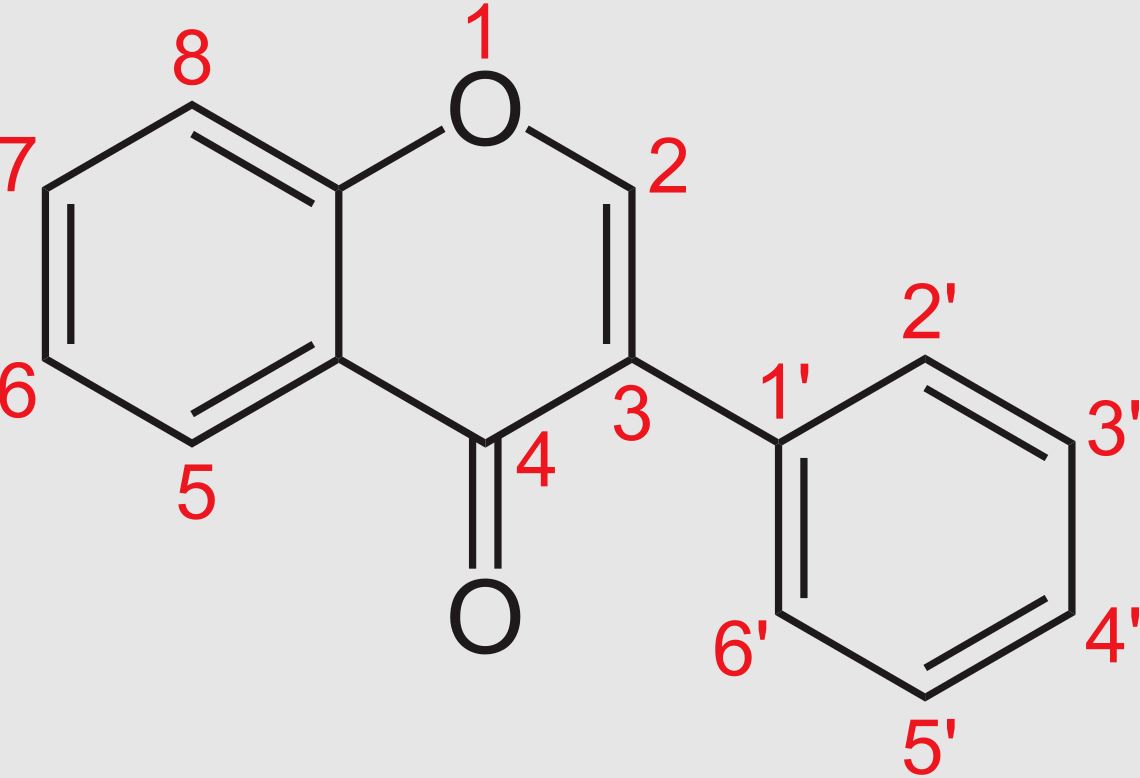Isoflavonoids
Abstract
Flavonoids (from the Latin word flavus meaning yellow, their color in nature) are a class of plant and fungus secondary metabolites.
Downloads
References
"The Gold Book". 2009. doi:10.1351/goldbook. ISBN 0-9678550-9-8. Retrieved 16 September 2012.
Isoflavonoid biosynthesis on www.ncbi.nlm.nih.gov/biosystems/
Du H, Huang Y, Tang Y (2010) Genetic and metabolic engineering of isoflavonoids biosynthesis. Appl Microbiol Biotechnol 86:1293–1312.
Dixon RA (2004) Phytoestrogens. Annu Rev Plant Biol 55:225–261.
Lund TD, Blake C, Bu L, Hamaker AN, Lephart ED (2011) Equol an isoflavonoid: potential for improved prostate health, in vitro and in vivo evidence. Reprod Biol Endocrinol 9:4
Wroblewski LL, Cooke JP (2000) Phytoestrogens and cardiovascular health. J Am Coll Cardiol 35:1403–1410.
Patisaul HB, JeffersonW(2010) The pros and cons of phytoestrogens. Front Neuroendocrinol 31:400–419.
Oldoni TLC, Cabral ISR, Arcea MAB, Rosalenb PL, Ikegaki M, Nascimentoa AM, Alencara SM (2011) Isolation and analysis of bioactive isoflavonoids and chalcone from a new type of Brazilian propolis. Sep Purif Technol 77:208–213.
Watanabe S, Uesugi S, Kikuchi Y (2002) Isoflavones for prevention of cancer, cardiovascular diseases, gynecological problems and possible immune potentiation. Biomed Pharmacother 56:302–312.
Rochfort S, Panozzo J (2007) Phytochemicals for health, the role of pulses. J Agric Food Chem 55:7891–7994.
USDA (2002) USDA-lowa state university database on the isoflavone content of foods. Agriculture Research Service, U.S. Department of Agriculture, Washington, DC.
Ren MQ, Kuhn G, Wegner J, Chen J (2001) Isoflavones, substances with multi-biological and clinical propertie. Eur J Nutr 40:135–146.
Sarkar FH, Li Y (2003) Soy isoflavones and cancer prevention. Cancer Invest 21:744–757.
Helferich WG, Andrade JE, Hogland MS (2008) Phytoestrogen and breast cancer: a complex story. Inflammopharmacology 16:219–226.
Choi EJ, Kim T, Lee MS (2007) Pro-apoptotic effect and cytotoxicity of genistein and genistin in human ovarian cancer SK-OV-3 cells. Life Sci 80:1403–1408.
Patel RP, Barnes S (2010) Isoflavones and PPAR signaling: a critical target in cardiovascular, metastatic, and metabolic disease. PPAR Res. doi:10.1155/2010/153252.
Si H, Liu D (2008) Genistein, a soy phytoestrogen, upregulates the expression of human endothelial nitric oxide synthase and lowers blood pressure in spontaneously hypertensive rats. J Nutr 138:297–304.
Alison M. Duncan Kerry E.W. Underhill Xia Xu June LaValleur William R. Phipps Mindy S. Kurzer. Modest Hormonal Effects of Soy Isoflavones in Postmenopausal Women. The Journal of Clinical Endocrinology & Metabolism, Volume 84, Issue 10, 1 October 1999, Pages 3479–3484.
Vincent A1, Fitzpatrick LA. Soy isoflavones: are they useful in menopause? Mayo Clin Proc. 2000 Nov;75(11):1174-84.

The entire contents of the Orthopaedic Journal of Madhya Pradesh Chapter are protected under Indian and International copyrights. Orthopaedic Journal of Madhya Pradesh Chapter allow authors to retain the copyrights of their papers without restrictions, Authors grant the publisher the right of exclusive publication. The Journal then grants to all users a free, irrevocable, worldwide, perpetual right of access to, and a license to copy, use, distribute, perform and display the work publicly and to make and distribute derivative works in any digital medium for any reasonable non-commercial purpose, subject to proper attribution of authorship. The journal also grants the right to make numbers of printed copies for their personal non-commercial use under Creative Commons Attribution-Non-commercial share alike 4.0 International Public License.

 OAI - Open Archives Initiative
OAI - Open Archives Initiative












